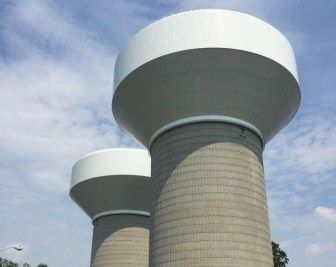Automated Residual Control Maintains Tank Chloramine Residual Levels and Eliminates Nitrite Issues
Published on by Water Network Research, Official research team of The Water Network in Case Studies
A key element of Loudoun Water’s mission to sustainably manage water resources has been its efforts to improve the operational efficiency of its drinking water system. For chlorinated water system, that means getting control of nitrification.

3-MG Dulles South Tanks. Loudoun Water can
only operate one tank due to water quality concerns.
Loudoun water in Northern Virginia has a history of embracing change and seizing opportunities to create a more robust and sustainable water system. Situated in the fast-growing suburbs of Washington D.C., Loudoun
Water provides chloraminated drinking water to over 65,000 households through a network comprised of more than 1,200 miles of pipes and seven water storage tanks. A key element of Loudoun Water’s mission to sustainably manage water resources has been its efforts to improve the operational efficiency of its drinking water system. For a chloraminated water system, that means getting control of nitrification. Loudoun Water used to be a simple secondary system, blending free-chlorine drinking water from the City of Fairfax with chloraminated water from neighboring Fairfax County. Due to the growth in its service area, Loudoun County continued to expand its capabilities by building additional transmission mains and storage capacity that culminated with the construction of the Dulles South Tanks, a pair of 3-MG fluted composite tanks serving the southern portion of its system
Find the Full Study in the Attachment
Source: 4PSI
Media
Taxonomy
- Drinking Water Security
- Treatment
- Treatment Methods
- Drinking Water Treatment
- Chlorination
- Water Supply
- Water Supply
- Water Utility
- Drinking Water Managment
- Drinking Water
- Infrastructure
- Utility Management
- Infrastructure Management
- water treatment
- Nitrogen